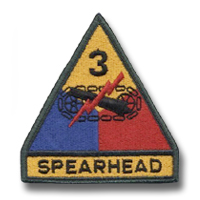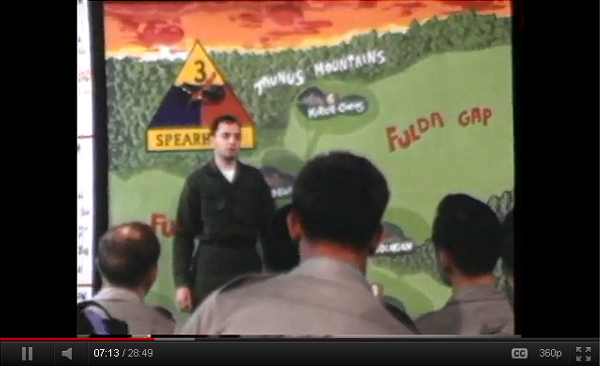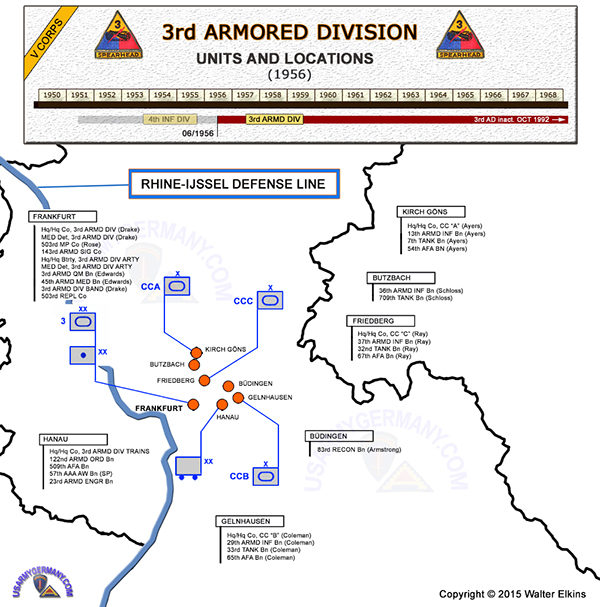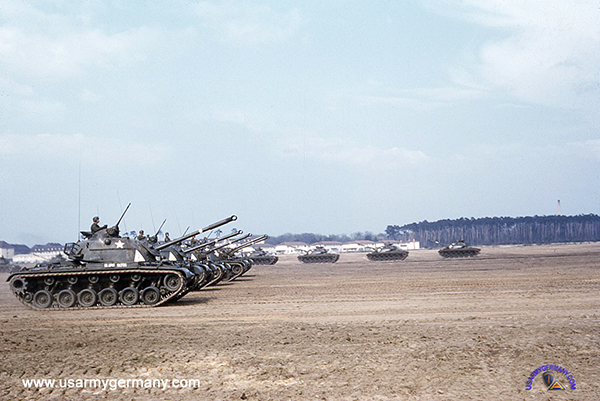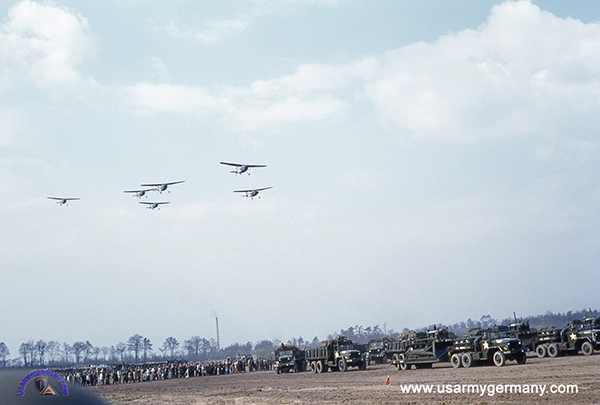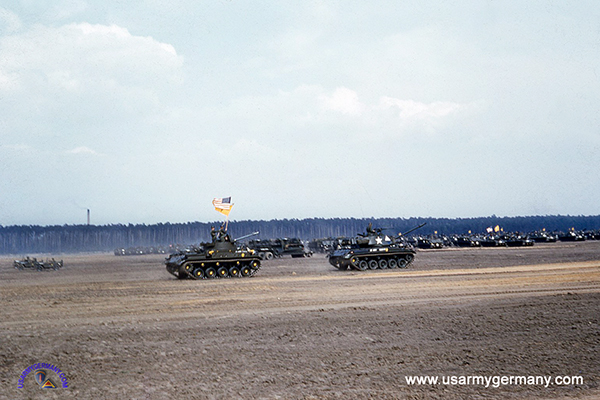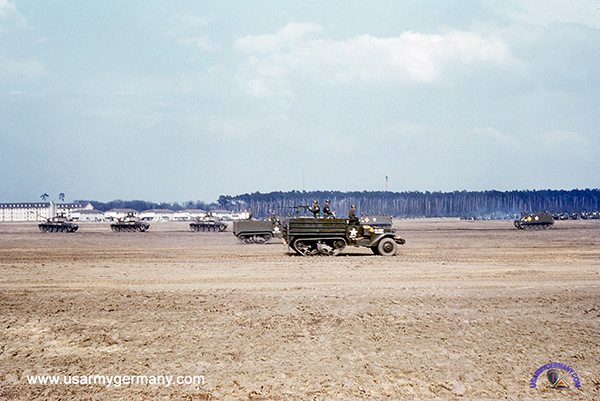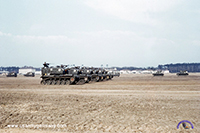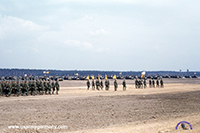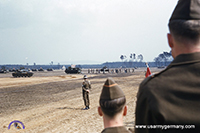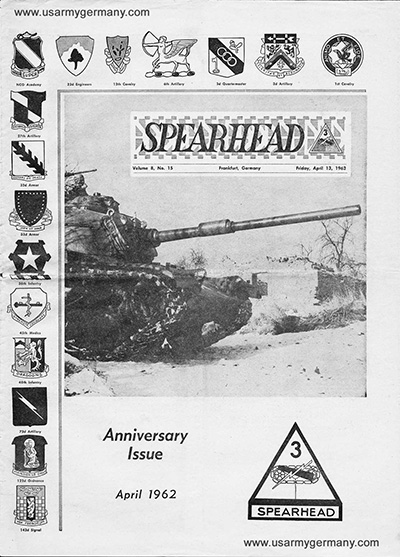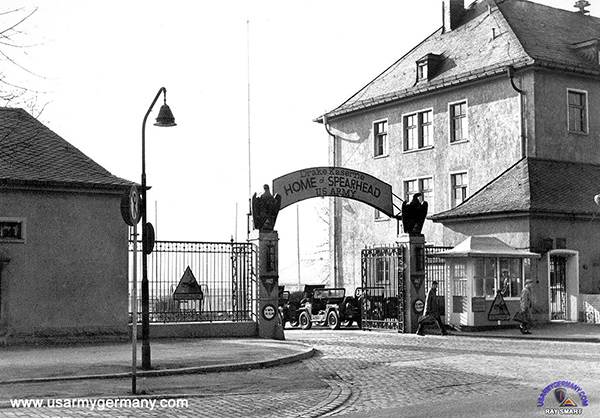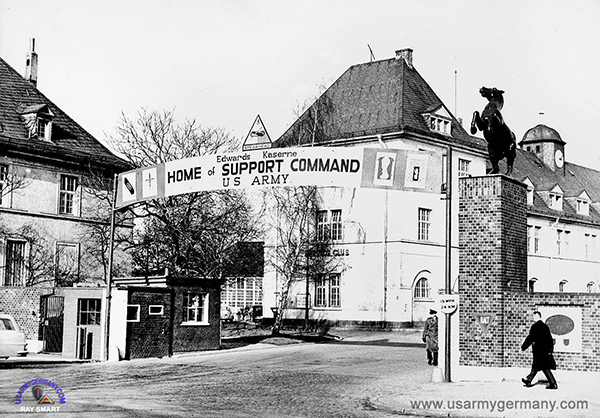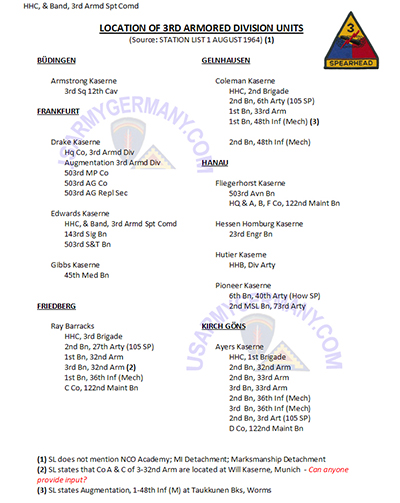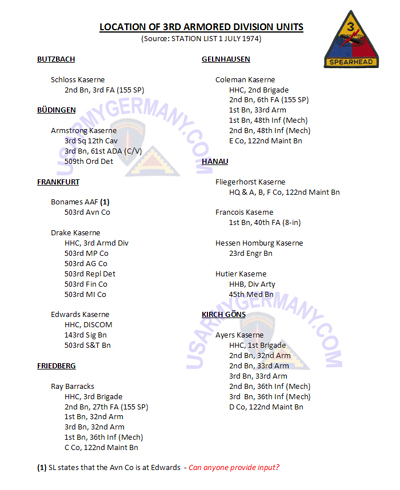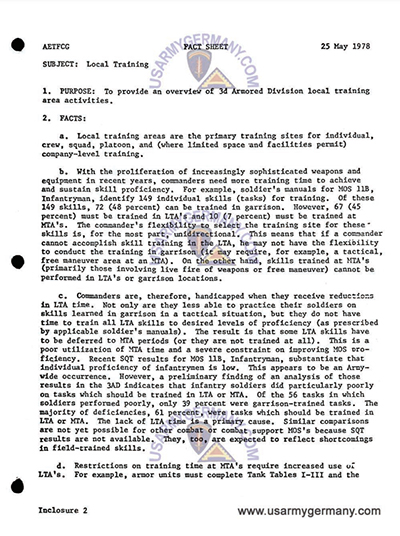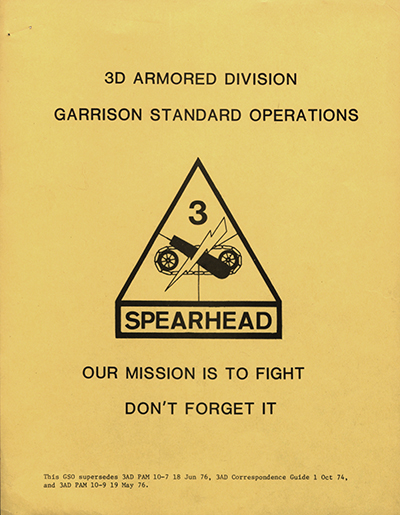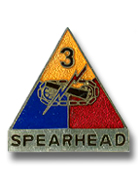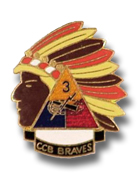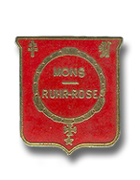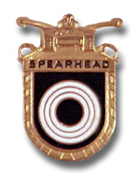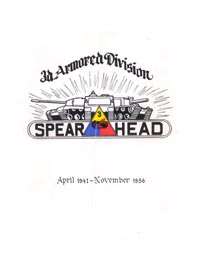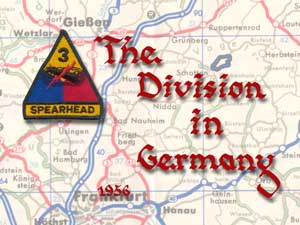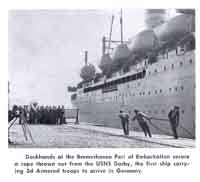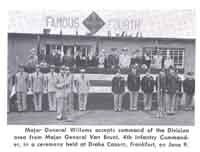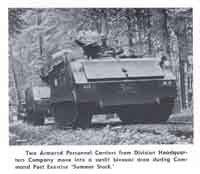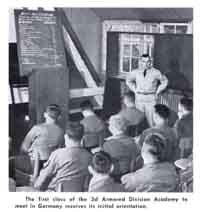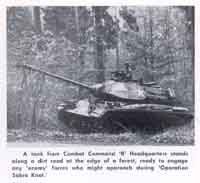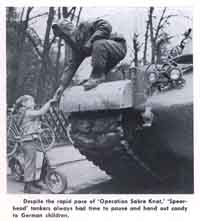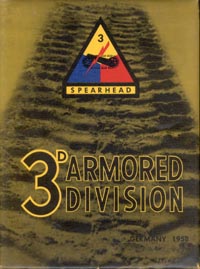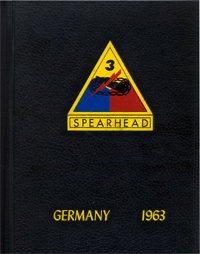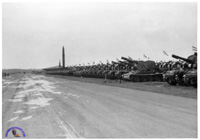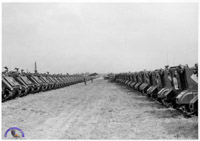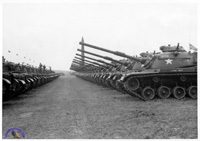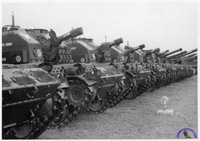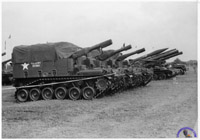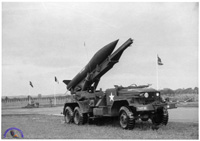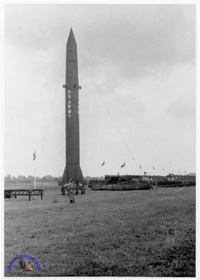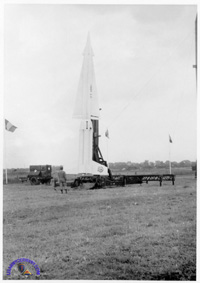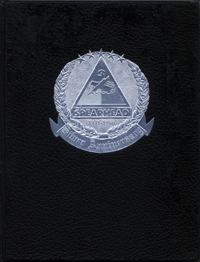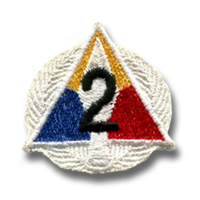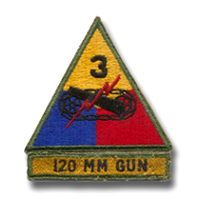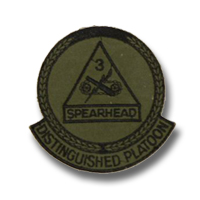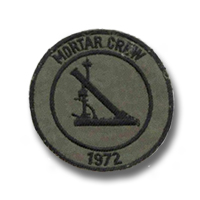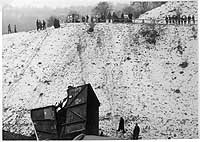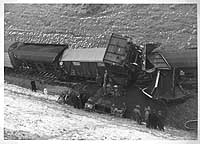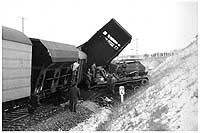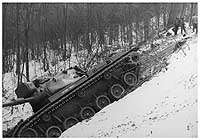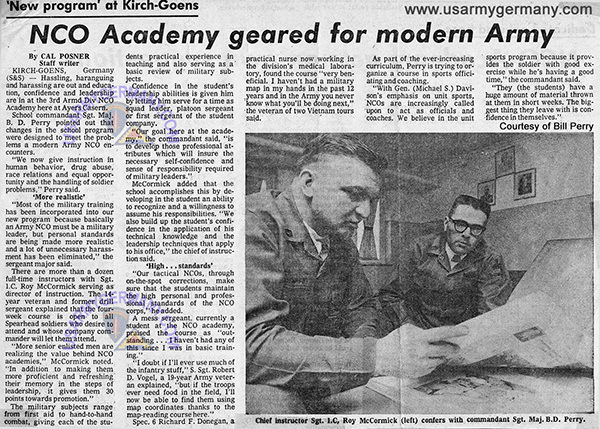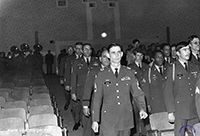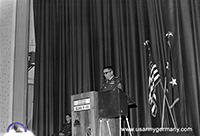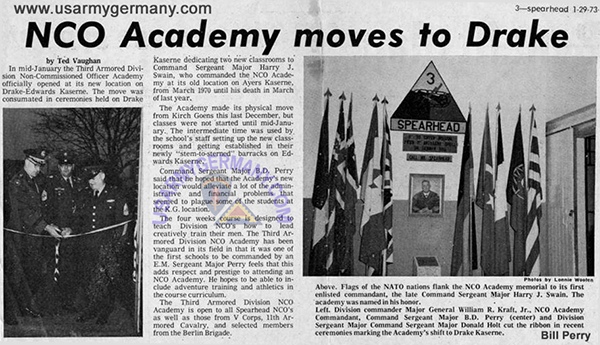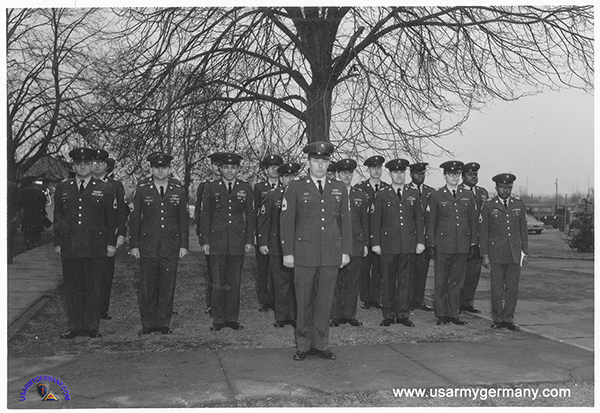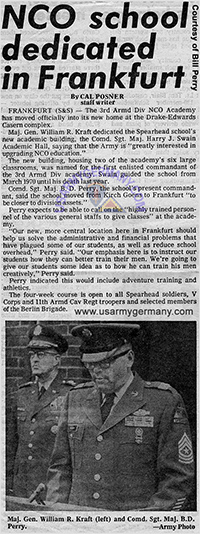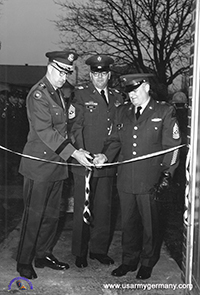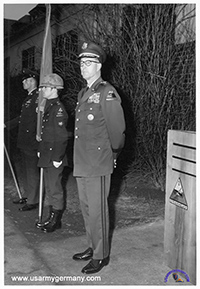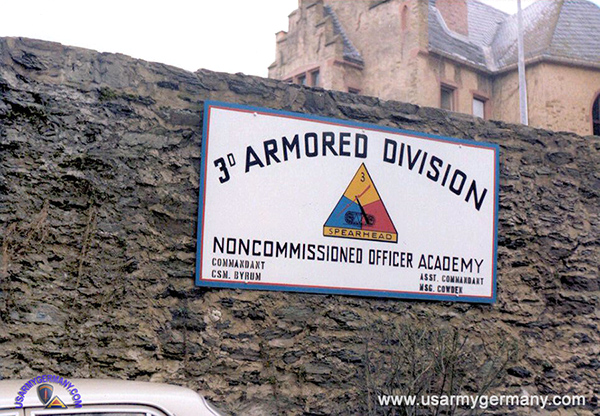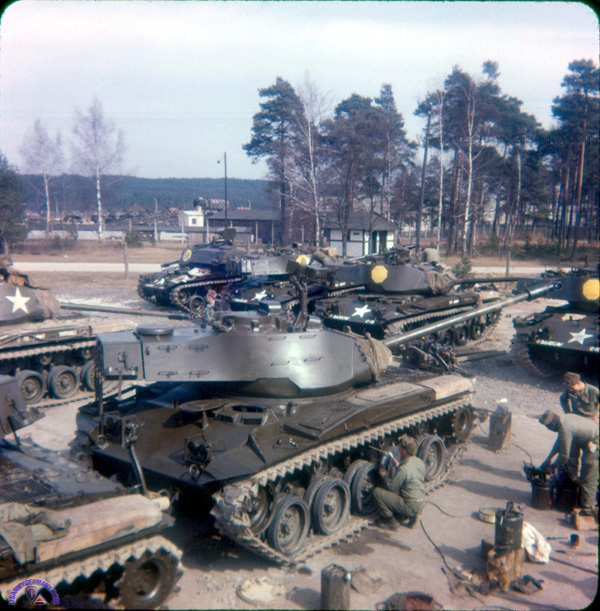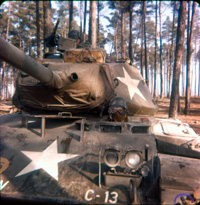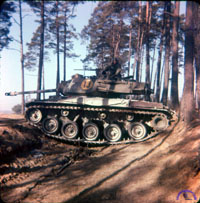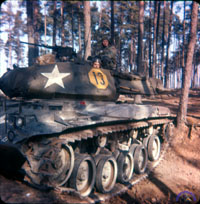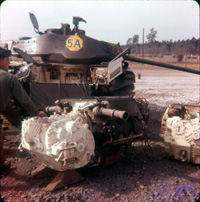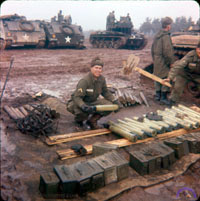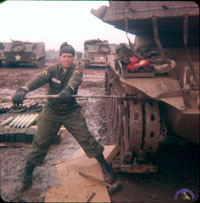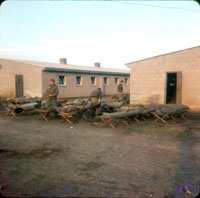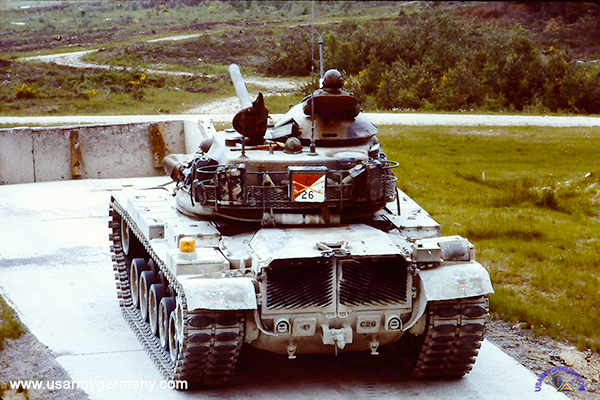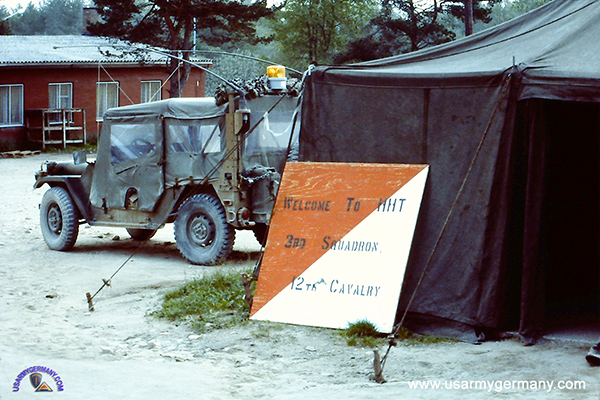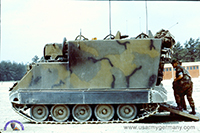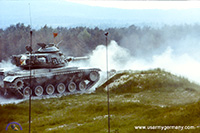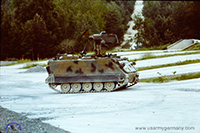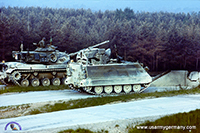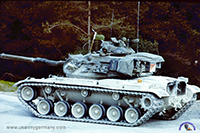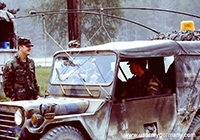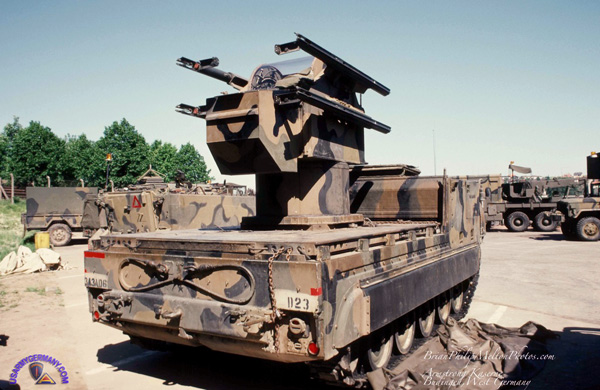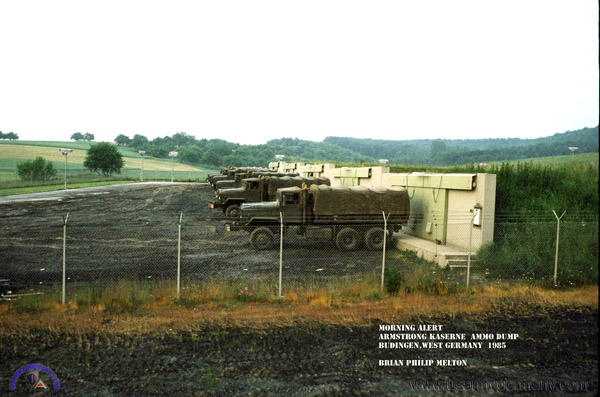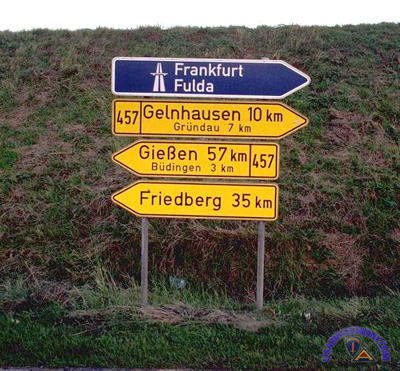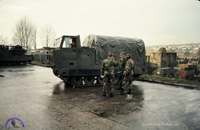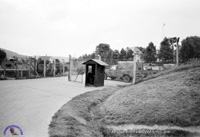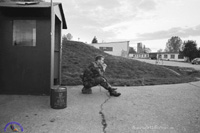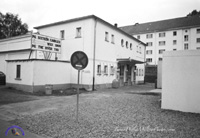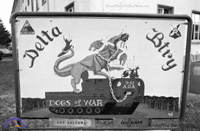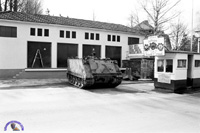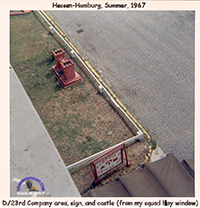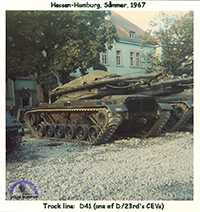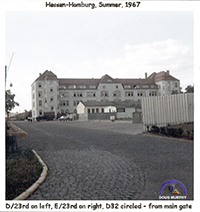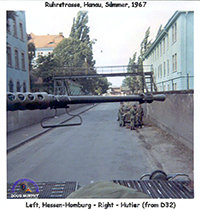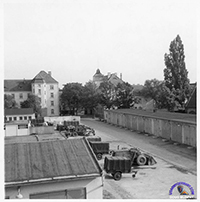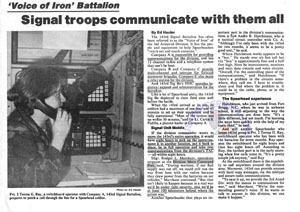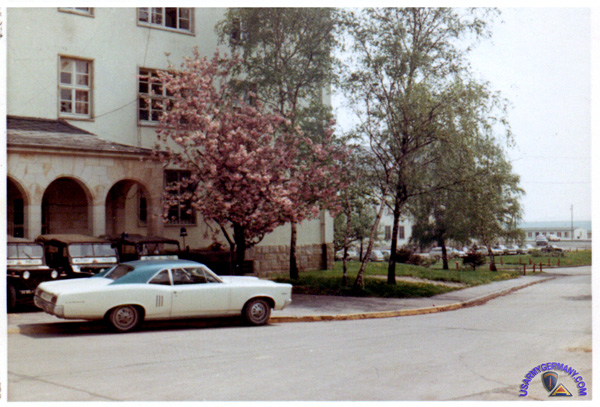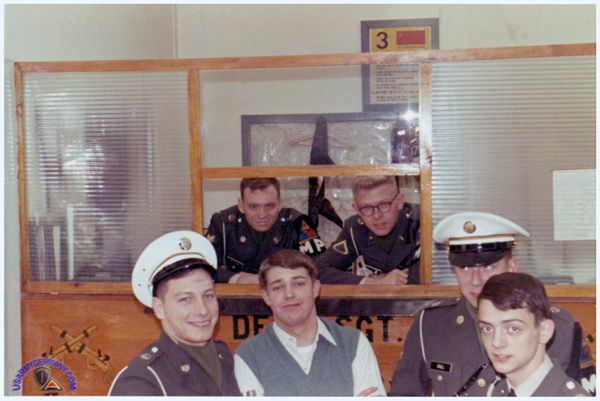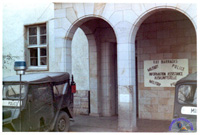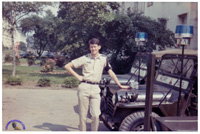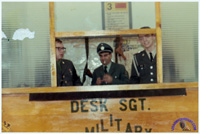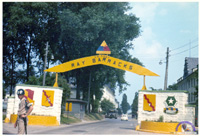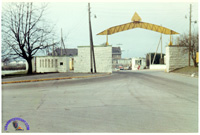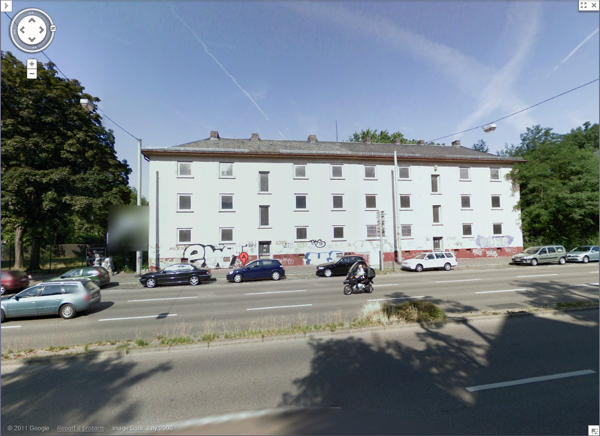| If you do NOT see the Table of Contents frame to the left of this page, then Click here to open 'USArmyGermany' frameset |
||||||||||||||
|
3rd
Armored Division |
||||||||||||||
|
|
||||||||||||||
|
||||||||||||||
| Division History | ||||||||||||||
| Commanding Generals, 3rd Armored Division | ||||||||||||||
1955 - 1992 (list is complete)
|
||||||||||||||
| 1957 | ||||||||||||||
| (Source: STARS & STRIPES, April 5, 1957) | ||||||||||||||
| The 3rd Armored Division held a four-day celebration in early April, 1957 to commemorate the division's 16th Anniversary. The opening ceremonies were held at Campo Pond in Hanau and were attended by an estimated 6,000 visitors. Among the top-ranking guests were General Lauris Norstad, Supreme Allied Commander in Europe; General Henry I. Hodes, USAREUR Commander-in-Chief; Lt Gen Bruce C. Clark, 7th Army Commanding General; Lt Gen Lemuel Mathewson, V Corps CG; as well as many high-ranking military and civilian dignitaries from NATO nations. The highlight of the opening ceremonies was a mounted and dismounted review held by the SPEARHEAD Division in which approximately 8,000 troops and about half the wheeled and tracked vehicles of the division as well as aircraft from the division's aviation sections participated. |
||||||||||||||
|
||||||||||||||
| 1961 | ||||||||||||||
| (Source: SPEARHEAD, 3rd AD command newspaper, Anniversary Issue, April 1962; Armor-Cavalry, Army Lineage Series, 1969; Infantry, Army Lineage Series, 1972) | ||||||||||||||
|
||||||||||||||
|
||||||||||||||
| 1962 | ||||||||||||||
| 1964 | ||||||||||||||
| (Source: Walter Elkins) | ||||||||||||||
| The list was created by Walter Elkins and is based on units and locations listed in the August 1964 Seventh Army STATION LIST. For corrections, please contact the webmaster. CORRECTIONS / ADDITIONS (Source: Email from Jerry Cronk, A Co, 143rd Armd Div, 1964-66) I enlisted in the Army September 1963, took basic at Ft Leonard Wood, second eight at Ft Belvoir and was shipped overseas January 1964 on the USNS Geiger, landed in Bemerhaven and I was stationed in Germany from January 1964 to August 1966 with the 3rd Armored Division, A company 143rd Signal Battalion at Edwards Kaserne in Frankfurt. I was looking at the table of organization and area assignments for that division and I may have some information and a possible correction or two. This is in reference to what was posted by Walter Elkins and based on a Seventh Army publication. 1. The 3rd Armored Division NCO Academy was at Ayers Kaserne at Kirch-Gons. This I know as I attended the Academy and graduated prior to being promoted to E5. Also drove several attendees up, in the 31 months I was in Frankfurt, to the Academy and I always went to Ayers Kaserne to drop them off and pick them up. 2. The 45th Medics was in the barracks next door to my barracks ( HQ & A company 143rd Signal ) and across the parade grounds from the mess hall and the 503rd S & T. I don’t believe that they were at Gibbs Kaserne----I recall that being almost exclusively an MP barracks. This is going back a year or two but I have always had a great memory for places and facts. Hope this helps a little bit in filling in some on the bits and pieces. |
||||||||||||||
| 1974 | ||||||||||||||
| (Source: Walter Elkins) | ||||||||||||||
| The list was created by Walter Elkins and is based on units and locations listed in the July 1974 STATION LIST. For corrections, please contact the webmaster. Norm Newhouse had some input regarding the Bonames question I had on the locations list: Bonames is the air field. No troop housing there. Troops were probably at Edwards. The 66th Avn Co. (Corps) also had their aircraft at Bonames. Their troops were at Gibbs when I left in 1965. All V Corps special troops units kept their ammo trailers at Bonames. No explosives in town. 45th Med. Bn was also stationed at Gibbs in 1965. |
||||||||||||||
| 1978 | ||||||||||||||
| 1980 | ||||||||||||||
| (Source: US Army Heritage and Education Center) | ||||||||||||||
| ADDITIONAL DUIs - 1950s-60s | ||||||||||||||
|
||||||||||||||
| Operation Gyroscope | ||||||||||||||
| (Source: 3rd Armored Division (Spearhead), April 1941 - November 1956, by PFC William R. Rock, 3rd Armd Div. Published by STARS & STRIPES, Darmstadt, Germany, March 1957.) | ||||||||||||||
|
||||||||||||||
| One week later
(late October 1955), another advance planning party, a 15-man group
led by Brigadier General Porter (Asst. Div. Commander), left for Germany.
The second such party to be sent from the Division, they spent three
weeks studying preparations for the movement of the Division to Frankfurt,
laying the groundwork for the location and operation of the branches
of the Division overseas, and reviewing plans for preparing Divisional
units to assume operations immediately upon arrival in Germany. Shortly after the second advance planning party to visit Germany returned to Fort Knox in late November, it was announced that the main body of the "Spearhead" Division would begin to leave Kentucky on its Gyroscope mission to Germany about April 25, 1956. Except for a small rear detachment, the entire Division would be in Europe by June 15, 1956. All troops would sail from New York City and dock at Bremerhaven, Germany, on the North Sea. Division Gyroscope plans called for Combat Command "A" to be the first to leave for Germany, followed by Combat Command "C" as the second increment and Combat Command "B" as the third. Division Headquarters and Division Artillery Headquarters were scheduled to move with the second increment. In addition to their normal supporting ordnance and artillery moving with each combat command, it was envisaged that Division combat support troops, such as engineers and quartermaster, would be split between the three groups for overseas movement. The same advance party report revealed the planned location of each unit in the Division during its three-year tour in Germany. Division Headquarters and Division Troops were to be stationed at Frankfurt, with Combat Command "A" at Kirch-Goens and Butzbach, Combat Command "B" at Gelnhausen and Buedingen, Combat Command "C" at Friedberg, and Division Trains at Hanau -- all within a 35-mile radius north and east of Frankfurt. Throughout the month of December, the Division Dependents Processing Center was kept busy with a large number of 3d Armored dependents preparing for the move to Germany. A total of 1,173 families, including 2,918 dependents, were initially processed. While training continued, however, more and more attention was focused upon detailed preparations for the actual movement of the Division to Germany. The sudden appearance throughout the Division area of numerous large corrugated steel packing containers stressed the imminence of its departure and emphasized an ever-increasing effort toward the tremendous tasks of packing, crating, and loading the equipment which would accompany the Division to Germany; of turning in that which would not; of checking personnel records, preparing shipment rosters, and insuring that all Division personnel were qualified for overseas duty from both a physical and mental standpoint. The Gyroscope began to whirl on March 1, when the first plane carrying members of the Division's advance party to Germany departed from International Airport in New York City. During the next two weeks, 650 advance party personnel, both officers and enlisted men representing each major command, made the transatlantic flight. Brigadier General Porter flew to Frankfurt on March 14, in order to assume the duties of acting Division Commander in Germany. It was the principal objective of the advance party to plan an efficient and expeditious replacement of 4th Infantry Division units with the incoming 3d Armored groups, and insure that all supplies and serviceable equipment necessary for assuring the combat readiness of each Division unit within 72 hours of its arrival were available. In addition, it was their responsibility to deal with other problems involved in a mass movement, including the reception and quartering of dependents, and coordination with V Corps, 7th Army, and USAREUR procedures. Even before the last advance party plane had faded from the New York skyline, the overseas movement of the main body of the Division came one step closer to reality with the release of May-June ship assignments. Six major vessels, it was revealed, would carry the Division across the Atlantic: the military transports Darby, Patch, Geiger, Butner, Rose, and Buckner. All would depart from the Brooklyn Army Terminal, with a three-day interval between the sailing dates of vessels in each separate increment, and dock at Bremerhaven, Germany, on the North Sea. The estimated departure dates of the first ship in each increment were May 4, May 23, and June 11. In mid-March, the first of five train loads of heavy equipment was loaded on railroad cars and readied for departure from the 3d Armored area at Fort Knox. Sixty-three flat cars carried 100 pieces of equipment, ranging from amphibious armored personnel carriers to self-propelled 105mm howitzers, to Hampton Roads Army Terminal, Norfolk, Virginia, where they were placed on vessels for overseas shipment. The remaining pre-embarkation period was not all work and no play, however. The Division celebrated the 15th anniversary of its organization with a week-long schedule of festivities during the second week in April. Among the special activities were a military gymkhana featuring physical fitness tests, hand-to-hand combat, and first aid, mortar firing, and footbridge assembly demonstrations; sporting events; dances; a musical cavalcade; a helicopter square dance; and special out-door anniversary church services. The week of pageantry was climaxed by a colorful Division review on Brooks Field, a fitting "Spearhead" farewell to its year of training at Fort Knox. The results of the Army Training Tests administered to all units in the Division during the preceding weeks were made known in mid-April. The results of these tests, which included day and night marches and selection of bivouac sites, as well as attack and defense tactics, showed commendable progress by all units, and indicated decisively that the "Spearhead" was in peak training condition, ready to assume its new role in Western Germany. Division vehicles and equipment were ready, too. A Command Maintenance Inspection conducted by personnel from all 3d Armored technical services and supervised by representatives from the Second Army, revealed a high standard of maintenance throughout the Division. No less than ten "Spearhead" units received a "superior" rating, scoring 94 or more points out of a possible 100. The electricity of anticipation among 3d Armored men reached a record high with the arrival of the month of May. The Gyro move that had been promised 15,000 men in the torrid basic training days in Kentucky was about to turn into exciting reality for the entire Division. In the early morning hours of May 3, it began. Troops of Headquarters and Headquarters Company, Combat Command "A"; the 13th Armored Infantry Battalion and the 143d Signal Co, complete with field clothes, steel helmets, and individual weapons, clambered aboard two transport trains sitting on Fort Knox sidings for the journey to New York. Arriving at the Brooklyn Army Terminal 26 hours later, the long trains pulled up at shipside, where the men, with a clicking efficiency which gave the impression of having been practiced all night, transferred to the USNS Darby. Promptly at 2 pm, the Darby sounded two ear-splitting blasts, and slipped away from Pier 4 with more than 1400 troops, 300 dependents, 11 dogs, and 2 cats aboard -- the first shipload of 3d Armored personnel to sail for Europe. |
||||||||||||||
| Chapter 10 | ||||||||||||||
|
||||||||||||||
| The men of the
"Spearhead" were back in Germany, but, unlike their fellow countrymen
of 12 years before, they had come not as an occupying force in an
enemy country but as guests of the sovereign German nation. They had
come not to participate in battle, but to help protect the peace and
security of Europe and the world. They had come not to support a war
effort, but to throw their weight behind an extensive peace effort.
The end was essentially the same, but the means were vastly different.
Once among the mightiest of swords, the "Spearhead" had now to be
one of the staunchest of shields. The final event of the overseas movement was the arrival in Frankfurt on June 30 of Brigadier General Fitch, who had served as Division Commander (Rear) in the States, supervising the departure of the Division's last elements headed for Germany. On the preceding day, the last ship of the third increment had glided into Columbus Quay, Bremerhaven, and, with the arrival of those troops in Gelnhausen, the Division became fully operational. Meanwhile, separate battalions of Combat Commands "A" and "C" left their Kirch-Goens and Friedberg caserns and took to the hills for their first real taste of overseas training. Their movement to "away from home" training sites initiated a steady flow of Division units to Wildflecken, a major training area to the east, and Grafenwohr, a still larger training site, replete with military history, some 250 miles from Frankfurt. The former training ground of the mighty Nazi panzer divisions commanded by Generals Rommel and Guderian during World War II, Grafenwohr began to hum with the sound of 3d Armored tanks rolling across its broad fields, and during the ensuing months every 3d Armored unit maneuvered there. Early in July, all Division headquarters units moved to the field to participate in Command Post Exercise "Summer Stock," a week-long Seventh Army exercise conducted with the aim of perfecting the command framework into which troop units could later be fitted. The operation provided the Division with its first major foreign-soil training. |
||||||||||||||
| The change of
command ceremony took place on July 21, at Drake Casern. A 13-gun
salute marked the departure of General Willems and the assumption
of command by Major General Porter, who had received his second star
earlier that day. In his farewell remarks, General Willems called
the Division "one of the outstanding divisions of the Army and one
of the very fine divisions stationed in Europe." Commanding the 3d
Armored, he said, had been "one of the very great rewards" in his
career as a soldier. In turn, General Porter proclaimed the Division
"a living testimonial to General Willems' wisdom and outstanding leadership."
More than 200 troops took part, including honor platoons and color
guards from the Division's major commands. A distinguished visitor toured a section of the Division area in late July. In the course of a threeday inspection of USAREUR installations and troop units in the field, Secretary of the Army Wilber M. Brucker spent a half-day observing 3d Armored training. Arriving in Hanau early on the morning of July 26, he was greeted at the Compo Pond Training Area by General Porter and the Division Band and Honor Guard, and was taken to observe training already in progress. He watched tanks crossing pontoon bridges, the construction of infantry foot bridges, amphibious operations involving M-59 Armored Personnel Carriers, and the employment of assault craft for infantry attack. As the tour of various phases of armor, infantry, and artillery progressed, Mr. Brucker frequently consulted the officers and enlisted men involved in the operation. After the series of demonstrations by elements of Combat Commands "B" and "C" and Division Trains, Secretary Brucker moved on to watch a reconnaissance, selection and occupation of positions demonstration staged by Battery "A" of the 509th Armored Field Artillery Battalion, and finally traveled to Grossheim (probably Grossauheim) on the Main River, where he observed the 23d Engineers and the 29th Armored Infantry Battalion practice the assault phase of a river crossing operation. He later expressed his pleasure at the type of training being conducted and especially noted the excellent spirit of the men. |
||||||||||||||
| New honors came
to the Division during the last week in August. Seventeen selected
enlisted men began four months of temporary duty with the Military
Assistance Advisory Group to Germany. Nominated for outstanding leadership
and soldierly qualities, the 17 "Spearheaders" were assigned to various
German training sites to assist in the training program of the Bundeswehr,
the new West German Army. As members of American instruction teams
requested by the federal German Government, the men -- mechanics,
light weapons infantrymen, medical aid men, supply specialists, and
clerks -- were fully qualified in their military occupational specialties.
They had been screened at each level of command and finally selected
in personal interviews by General Fitch. About the same time seven Division soldiers were chosen to travel to Antwerp, Belgium, to represent the United States Army at the annual memorial services honoring the Allied dead of World Wars I and II. The group, which served as an American honor guard, was composed of an outstanding enlisted man from each major command plus a member of Division Headquarters. Meanwhile, training continued at a steady pace throughout the Division. Combat Command "A" undertook a month of field training amid the hills and broad sweeping valleys of Grafenwohr, and selected 3d Armored tankers sharpened their technical proficiency by attending courses at the Seventh Army Tank Training Center at Vilseck. Combat Commands "B" and "C," awaiting their turns to train at Grafenwohr, worked hard at training areas located near their respective caserns, the latter command staging a series of demonstrations for Lieutenant General Mathewson, V Corps Commander, in mid-September. Three foreign generals visited the Division during September. Brigadier General Henri Dodelier, French Commander of Task Force "B" in Wetzlar, Germany, conferred with General Porter at Drake Casern, while Italian General Clementi Primieri, Commander of NATO Forces, Land South, and Major General Renato De Francesco, General Primieri's Chief of Staff, spent a full day at Grafenwohr on an inspection tour of 3d Armored units. A five-car caravan took the high-ranking Italian general over the dusty roads of the training site to observe 3d Armored training tactics, which he declared similar to those employed by the Italian Army. |
||||||||||||||
| The completion
of "Sabre Knot" marked the high point in the 3d Armored Division's
two-year redevelopment into a top-notch combat ready unit. It was,
as General Porter put it, the Division's "graduation exercise." The
high level of tactical and administrative proficiency evidenced by
the "Spearhead" throughout the exercise was ample proof of the tremendous
advances it had made in preparing for its vital role in helping to
protect the free world. It was now recognized that the Division had attained the status for which it had been reactivated -- an alert, technically proficient, disciplined armored striking force. The problems of traversing an ocean and settling in a new land lay behind. The problems peculiar to Germany were no longer new to the men of the Division. They had met and mastered them. The task henceforth was to remain at top efficiency at all times -- always prepared for whatever tasks the Division might be called upon to perform. |
||||||||||||||
| 1958 Yearbook | ||||||||||||||
| (Source: 3rd Armored Division, Yearbook 1958, Germany) | ||||||||||||||
|
||||||||||||||
| 1963 Yearbook | ||||||||||||||
| (Source: 3rd Armored Division, Yearbook 1963, Germany) | ||||||||||||||
|
||||||||||||||
| FTX "Sabre Hawk" began early the next month, and during its ten-day duration tested all portions of the Division in long-range and stay-behind patrols. The former furnished valuable information throughout the exercise. Spearheading the "Blue" forces under V Corps direction, the Division again gained praise for its maneuverability and coordination. With the entire Division committed to the field for ten days, there were no fatalities or serious injuries, the pay-off of never ending training. The Division's professional manner was exemplified by members of the 122d Ordnance Battalion when they accomplished 35 recovery missions and completed 381 jobs in service sections, 274 jobs in armament sections and 458 jobs in track and wheel sections. In mid-March, it was announced by the Department of the Army that the 3d Armored Division had been withdrawn from the Army's Gyroscope plan. It also was learned that replacements would be supplied by a system of individual replacements and trained packets. The change was important to the Division as a whole because it now would continue to serve indefinitely as a part of the NATO bulwark of defense in Europe. In June, the Division was presented with awards for its superior performance in the Seventh Army Tank Gunnery Program. Two awards, top honors in both the battalion and company phases of the program, were given for the high level of accuracy turned in by the 1st Cavalry during its firing at the Belsen-Hohne Ranges. Division marksmen became Seventh Army champions in October 1958 as they stayed a fraction of a percentage point ahead of the 3d Infantry Division team in shoulder-to-shoulder matches. Some 360 marksmen competed for 48 individual awards with Spearheaders taking ten of them. The matches constituted 'firsts' in two respects: It was the first time that team trophies were awarded in addition to single awards for individual events, and it was the first time Spearheaders had defeated the 3d Infantry team -- pre-match favorites. Familiar Division scenes were filmed in August during three weeks of work by photographers from Paramount Studios for its $2 million movie "GI Blues." It is the story of a soldier's life with the United States Army in Germany, starring Elvis Presley; but he didn't appear before the cameras until his discharge in March 1960, All Division units participated in FTX "Winter Shield" during February 1960, Seventh Army's annual winter maneuver staged in the vicinity of the training center at Grafenwöhr. It was the high point of winter training and involved 60,000 men drawn from V and VII Corps and the Bundeswehr, as well as the 3d Armored Division. It marked the first time that major units of the new German Army jointly participated with United States ground forces in a field exercise. It was a test of combat readiness and provided realistic training under simulated combat conditions, with emphasis placed on the role of the individual soldier and small unit leader. Training with advanced weapons and in all types of heliborne operations were practiced. Action consisted of a series of attack, withdrawl and counterattack operations, with the result that every type of participating unit benefited from the exercise. Spearheaders moved to the field en masse again in November 1961 in preparation for FTX "Brandywine", a week-long exercise designed to test the Division's ability to move, shoot and communicate. Command control systems, logistical and administrative procedures, and teamwork between combat and support elements-in addition to small-unit tactical training--were included in the maneuver that was hampered with rain, snow, mud and fog. The Division was supported by V Corps and Seventh Army units for a total of 26,000 men participating in the exercise. Pre-exercise training included cold weather indoctrination, CBR, map reading and intelligence training. On May 19, 1962, Major General Creighton W. Abrams, Jr., Division Commander, was reassigned to the Office of the Deputy Chief of Staff for Operations at Department of the Army. He departed the Division after having held his post since October 1, 1960, and was succeeded by the Division's present Commanding General, Major General John R. Pugh, who came from Second Army Headquarters at Fort George G. Meade, Maryland. Secretary of Defense Robert S. McNamara visited the Division October 5 that year, and was escorted by General Pugh. Secretary McNamara, dressed in field clothing, spoke to many Division officers and enlisted men as they went about their daily tasks. He was briefed on CCA's mission by, then, Colonel Arthur L. West, Jr., the Command's commanding officer. The Secretary terminated his visit by flying to Division Artillery's field command post where he was briefed on the command's mission. Testing speed, mobility and striking power, the 3d Armored Division wound up the active year by moving to the field for FTX "Sabre Knot." The exercise involved more than 30,000 troops from the 8th Infantry Division, V Corps Artillery, 212th Artillery Group and 37th Engineer Group, as well as the 3d Armored Division. It was conducted in an area encompassing Bad Hersfeld, Giessen, Russesheim, Eberbach, Aschaffenburg and Fulda. Brigadier General Fillmore K, Mearns arrived in the Division June 21 to assume duties as Assistant Division Commander for Support. He came from the XVIII Airborne Corps at Fort Bragg, North Carolina, where he had commanded Corps Artillery since November 1962. The USAREUR Tank Crew Qualification Course record at Grafenwohr's Range 42 was smashed by Sfc Bobby P. Phillips and his crew when they ran the course during annual summer training. Their total score of 1,945 points surpassed, by a wide margin, the record set in November 1962 by a non-Divisional unit. In attaining the high overall score, the men also broke another USAREUR record: that of making 990 points on the night run. Training periods at the Seventh Army Training centers include not only TCQC. Each Spearheader has ample opportunity to practice his skills, from mortar and artillery forward observers, to parachute packers. Training consists of firing tank gunnery tables for qualifications, 4.2-inch mortar firing, artillery service practice, gas chamber exercises, qualification and familiarization firing of small arms and automatic weapons, RSOPs for artillerymen, and company, troop, battery and battalion FTXs. These activities supplement normal garrison training, which includes company tactical training, heliborne operations, landmine warfare, river crossing techniques, tank gunnery refresher training and subcalibre gunnery instruction. Operation "Big Lift" began October 30 and lasted for seven days. The 3d Armored Division acted as aggressors for the 2d Armored Division, air-lifted from Fort Hood, Texas; with action beginning near Kassel, Germany, in response to provocation by "enemy" forces patrols violating a hypothetical international border. The Division's offensive action drove elements of the "Hell on Wheels" Division back to the Main River and delayed a planned river crossing for more than 24 hours. Action such as this highlighted the entire maneuver. This, then, is the Spearhead Division. The unit continues to add to its roster of noteworthy achievements. With its heroic and glorious combat record behind it and its unequalled success in maintaining the high training standards required for modern warfare, the Division confidently looks forward to the challenges the future will bring. |
||||||||||||||
| Click here to view the 1963 YEARBOOK (Source: Michael Gushwa) | ||||||||||||||
| (Source: Walt Leon, HHB 36th FA Gp, 1962-64) | ||||||||||||||
| See also Walt's comments and photos of Babenhausen. On 25 June 1963, 3rd Armored Division hosted a big review ceremony at Fliegerhort Kaserne with over 15,000 troops and 700 pieces of wheeled and tracked equipment. Although predominantly from 3rd AD., some of the troops and equipment came from other USAREUR units. President John F. Kennedy, in Germany for a state visit and on his way to Berlin to make his famous "Ich bin ein Berliner" speech (26 June 1963), participated in the grand review. After reviewing the men and equipment massed along a mile-long parade front, he mounted a reviewing stand and held a short speech. (See The American Presidency Project website for an online transcript of the speech.) The photos below show the tail end of preparations for the review. After several days of hard work, everything is ready for the demonstration of USAREUR armored and nuclear might. |
||||||||||||||
| 1966 Yearbook | ||||||||||||||
| (Source: 3rd Armored Division, Silver Anniversary Yearbook 1966, Germany) | ||||||||||||||
|
||||||||||||||
| Miscellaneous | ||||||||||||||
| ADDITIONAL DUIs | ||||||||||||||
|
||||||||||||||
| ADDITIONAL PATCHES | ||||||||||||||
|
||||||||||||||
| Maneuver Damage (FTX Silver Talon, 1966) | ||||||||||||||
| (Source: Email from Hans-Bernd Glanz, Germany) | ||||||||||||||
The following
photos and information are about a maneuver accident that occurred
during 3rd AD's FTX "Silver Talon" on January 11, 1966 near
the small town of Burgbernheim, between Ansbach and Würzburg. |
||||||||||||||
|
||||||||||||||
| For some additional information on FTX Silver Talon, check out the 3rd AD PIO, 1965-1969, website (see Related Links below) and go to the Memorabilia Page. | ||||||||||||||
| 3rd Armored Division Troops | ||||||||||||||
| 3rd Sq, 12th Cav 3rd Bn, 61st ADA 23rd Engr Bn 143rd Sig Bn 503rd Avn Bn 503rd MP Co 3rd AD NCO Academy |
||||||||||||||
| NCO Academy | ||||||||||||||
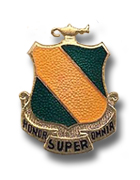 3rd AD NCO Academy DUI 3rd AD NCO Academy DUI |
||||||||||||||
| AYERS KASERNE, KIRCH-GÖNS | ||||||||||||||
| (Source: Email from Bill Perry, son of Sgt. Maj. B.D. Perry) | ||||||||||||||
| Above, a STARS & STRIPES article (Issue: Nov 16, 1972/p.9) discussing the mission of the 3rd Armored Division NCO Academy. My father was a newly promoted Sergeant Major and 2nd NCO in the Army to be a Division NCOA Commandant. | ||||||||||||||
|
||||||||||||||
| DRAKE-EDWARDS KASERNE, FRANKFURT | ||||||||||||||
| (Source: Email from Bill Perry, son of Sgt. Maj. B.D. Perry) | ||||||||||||||
| Above, the 3rd Armored Division “Spearhead” newspaper covering the events. The 3rd AD NCOA four week course was also available to the 11th Armored Cavalry Regiment as well as the Berlin Brigade soldiers. (To read about Sgt Maj Perry's other assignments in Germany, click here.) |
||||||||||||||
|
||||||||||||||
| KRANSBERG CASTLE | ||||||||||||||
| SCHLOSS KASERNE, BUTZBACH | ||||||||||||||
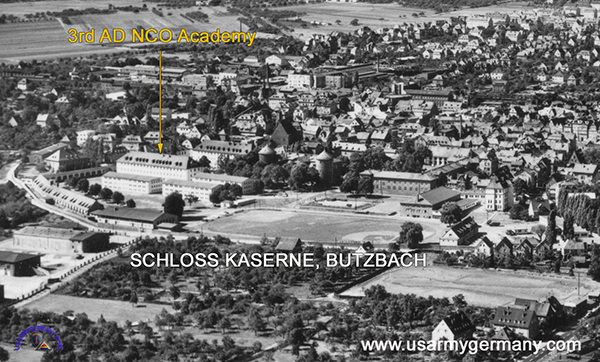 Location of the 3rd Armd Div NCO Academy at Schloss Kaserne (Webmaster's collection) |
||||||||||||||
| 3rd Squadron, 12th Cavalry | ||||||||||||||
| (Source: Author's private collection) | ||||||||||||||
|
||||||||||||||
|
||||||||||||||
| 1983 | ||||||||||||||
| (Source: Email from Frank Shirer, HHB, 3rd Armd Div Arty, 1985-87) | ||||||||||||||
| The photos posted here are from my second tour with 3d Armored Division, 1983-87, when I served with 3-12 Cavalry and 3d Armd Div Artillery HQ. I was the S-2 in both organizations. | ||||||||||||||
|
||||||||||||||
| 3rd Battalion, 61st Air Defense Artillery | ||||||||||||||
| 1984 | ||||||||||||||
| (Source: Email from Brian P. Melton, Armstrong Kaserne, July 1984-Jan 1986) | ||||||||||||||
| I served on a small kaserne in Büdingen, West Germany called Armstrong Kaserne. There were only two units there: I've been hoping to post my photos somewhere. I have a page on Google Earth/Panoramio. I have hundreds of photos of Budingen/Gelhausen as well as many of Armstong/Coleman kasernes (URL: www.panoramio.com/user/3676634 ) |
||||||||||||||
|
||||||||||||||
|
||||||||||||||
| 23rd Engineer Battalion | ||||||||||||||
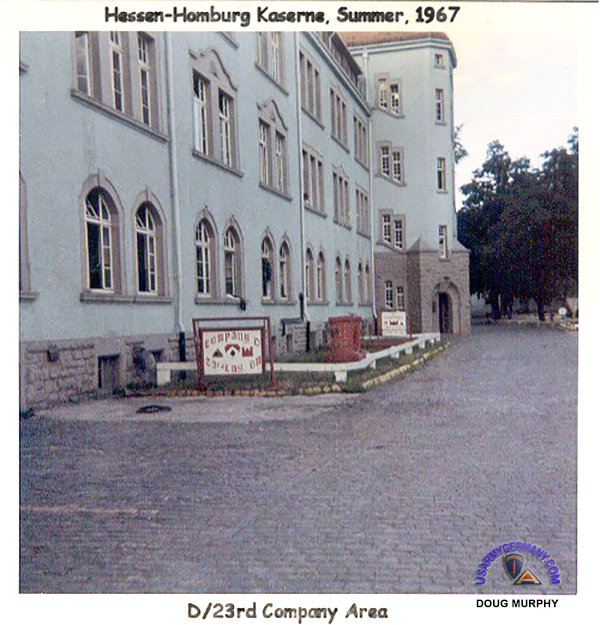 Looking towards the C Company end of the barracks, Hessen-Hmburg Kaserne (Doug Murphy) |
||||||||||||||
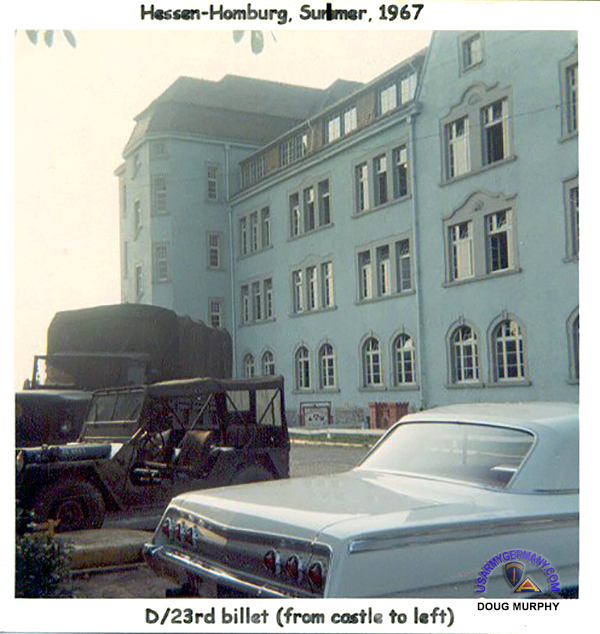 Western end of Building #1004, Hessen-Hmburg Kaserne, Hanau (Doug Murphy) |
||||||||||||||
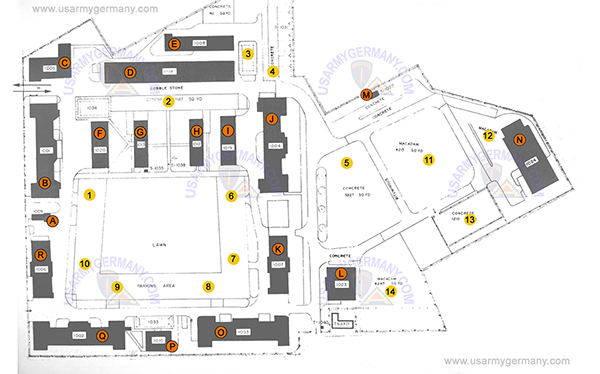 Annotated map for Hessen-Homburg Kaserne, Hanau, around 1963 (Click on map to view higher resolution map) |
||||||||||||||
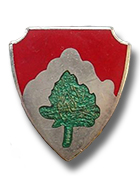 23rd Engineer Battalion DUI 23rd Engineer Battalion DUI |
||||||||||||||
| 1967 | ||||||||||||||
| (Source: Doug Murphy, Facebook) | ||||||||||||||
|
||||||||||||||
| 143rd Signal Battalion | ||||||||||||||
| (Source: Email from Richard Amoroso) | ||||||||||||||
I was stationed in Frankfurt from 6 June 1968 till 30 May 1969. I 1049'd to Vietnam and ETS'd 6 July 1970.
In Germany, I was attached to the 3rd Armored Division, A Co, 143 Sig Bn, Drake-Edwards Kaserne. Sound familiar??? I was a 31J20, as in a teletype repairman. Since everything we had was 100% tactical, I spent precious little time in a shop environment and almost all of my time in the field. If it was a teletype, was hooked up to a KW7 and spent it's time in the field, I fixed it. Obviously, I had a secret-crypto clearance. Made E4 in Germany and E5 in Vietnam. Since I had this clearance, I was not allowed in Berlin. Why? Ask S2. I had NO idea. Most of our stuff was TT-4's, TT-98's,and TT-76's. The 25's were strictly Comm Center stuff. When I got to Nam, I was assigned to the 52nd Signal Battalion, 1st Signal Brigade, out of Can Tho. Strictly Comm center, w/KW7's, KW26's, a LOT of AN/FGC-25's, TT-123's, 76's and AUTODIN equipment. I could chat about this for hours......ahhhh, the good old days......regards, Richard |
||||||||||||||
| 1983 | ||||||||||||||
| (Source: SPEARHEAD, October 4, 1983) | ||||||||||||||
|
||||||||||||||
| 503rd Military Police Company | ||||||||||||||
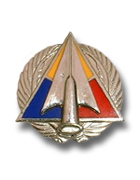 3rd Armd Div NCBU crest (worn by 503rd MP Company) 3rd Armd Div NCBU crest (worn by 503rd MP Company) |
||||||||||||||
| 1969 | ||||||||||||||
| (Source: Email from James Woodrum, 3rd Pltn, 503rd MP Co, | ||||||||||||||
| The 3rd Platoon of the 503rd MP Company was stationed at Ray Barracks in Friedberg. I recall we had two or three squad leaders (usually a Sgt of which I was one), a platoon Sgt. and a platoon leader (Lt). Our primary function was to provide security and support activities to the 3rd Bde that was stationed at Ray Barracks. We escorted and provided traffic control during "alerts" and field training exercises. We provided law enforcement functions on post when called upon by various companies and a point of contact or report of criminal activities. We provided routine patrol of the post, Friedberg and Bad Nauheim. We assisted the German Police in incidents involving military personnel and their families. Various companies in the Bde assigned staff to work as Unit Police (UP's) to work the front gate security however if a incident occurred the MP's were notified. The 503rd MP Company's 3rd Platoon and the MP Station occupied the first floor of the building (see photo above). I recall some 3rd AD support company occupied the other floors, however, I do not recall what units. |
||||||||||||||
|
||||||||||||||
| Webmaster note: I read in the STARS & STRIPES that, in the early 1970s, the MP Station was located on Eschersheimer Landstrasse 153, near the Abrams Building. It looks like it was moved to Gibbs Kaserne at some point after that. Can anyone provide details? | ||||||||||||||
| 1984 | ||||||||||||||
| (Source: Email from Tracey (Marshall) Wirth, 503rd MP Company, 1984-86) | ||||||||||||||
| I was looking at your website and noticed that the 503rd MP CO was not listed, neither under the 3rd Armored Division, nor under the link for Military Police link. If you could add them on, I would be very grateful. We even sent a couple of MP’s each day to work the road with the 284th MP CO at Gibbs Kaserne. In garrison, we pulled mostly gate duties and guarding general's loop over by Edwards housing. We would send a small amount of people every day to work with the 284h MP CO, so we would get a chance to work the road. Every shift, someone (either 284th or 503rd) was picked to be the dispatcher for the shift at the MP Station on Gibbs Kaserne. After a while of working the road, I got chosen quite often to work as dispatcher. I was also working as dispatcher the day the bomb went off at the Frankfurt PX (November of 1985). What a busy day! I can't remember too much more of our garrison duties, but I'll keep trying and let you know when I come up with more. |
||||||||||||||
| Related Links: 3rd Armored Division Association The official Association of 3rd Armored Division Veterans site, for the period 1956 to 1992 in Frankfurt; a truly awesome site!) 3rd Armored Division History Site - (Updated URL!) A colorful and informative site that is packed with information about the Spearhead Division, including WWII, Cold War, and Gulf War. Begun in 2003, and one of the very best division history sites, it just keeps on growing. |
||||||||||||||
